Training Cats to Avoid Biting and Scratching

Understanding the reasons behind a cat’s biting and scratching behavior will help in fostering a harmonious relationship with your feline companion.
Though these actions are instinctive, they can sometimes be problematic.
By identifying the causes, you can find effective ways to reduce these behaviors as much as possible.
Table of Contents
Understanding Why Cats Bite and Scratch
Cats tend to bite and scratch for various reasons, often related to their natural instincts and ways of communicating.
Recognizing these motives is essential to approaching and reducing undesired behavior.
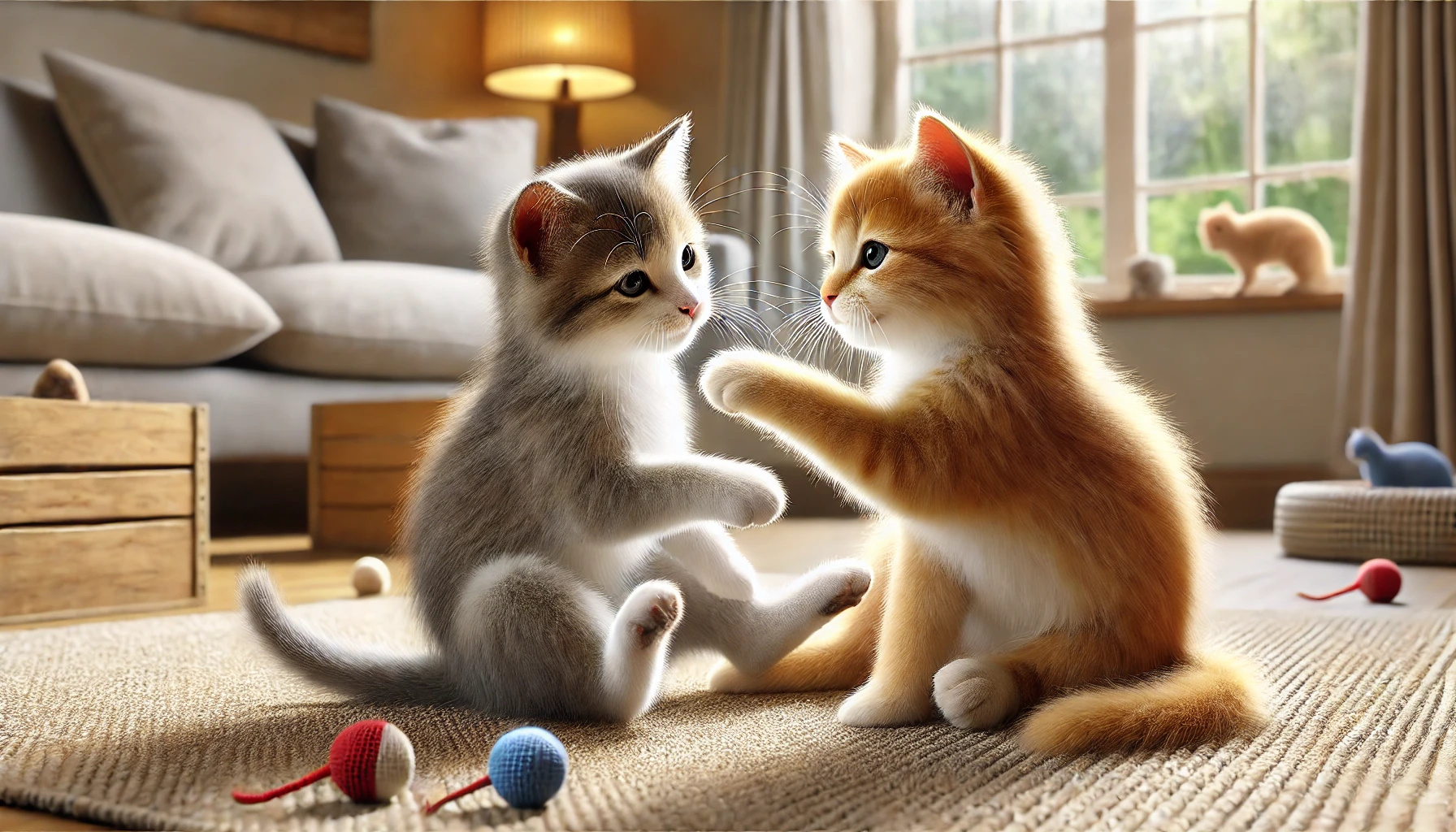
Natural Instincts and Play Behavior
Play-fighting between sibling cats begins at a young age and is part of their natural hunting behavior.
Cats play to perfect their hunting skills, and they learn to modulate the intensity of bites and scratches through interactions with their siblings.
However, if a cat does not fully learn these inhibitions, it may bite and scratch more intensely when playing as an adult.

Signs of Overstimulation or Aggression
Have you experienced this: you are petting your cat, enjoying the time together, when suddenly, they bite or scratch?
This reaction may be due to overstimulation.
Cats have a certain tolerance for touch, and once they reach their threshold, they may react by biting or scratching.
Additionally, if a cat feels threatened or cornered, it may behave aggressively as a form of self-defense.

Aggression Due to Medical Issues
In some cases, biting and scratching may indicate underlying health problems.
Common causes include dental pain, arthritis, or skin irritations, which can cause discomfort and lead a cat to act out.
If your cat has suddenly become aggressive despite not being prone to it, consider a check-up with your veterinarian to rule out any medical issues.
By understanding these factors, you can better interpret your cat’s actions and respond appropriately.
In the following sections, we will explore ways to prevent biting and effective methods to manage scratching behaviors.
Understanding a cat’s instincts and behavior helps owners manage and reduce unwanted biting and scratching.
Be patient and observe your cat’s body language to prevent these behaviors effectively.

Techniques That Can Successfully Prevent Biting
The first step in helping your cat avoid biting is understanding specific techniques you can apply.
Positive reinforcement, redirecting aggression, and clearly setting boundaries will help establish proper etiquette for your cat, reducing unwanted biting behaviors.

Techniques of Positive Reinforcement
Positive reinforcement is a powerful tool for training and encourages desired behaviors in cats.
When your cat interacts gently without nipping, immediately reward them with treats, praise, or affection.
This way, they associate positive feelings with gentle behavior, reinforcing the behavior you want to see.
Consistency is essential.
Make sure all family members and visitors follow this approach, so your cat receives a consistent message.

Redirecting Aggressive Behavior to Toys
Cats are natural predators and may show their biting reflex during play.
To redirect this constructively:
- Provide a variety of toys that mimic prey, such as feather wands or toy mice.
- Engage in playful interaction sessions to satisfy their hunting instincts.
- Avoid using your hands and feet as play objects to prevent sending the wrong signals; otherwise, your cat may see them as something to bite.
By providing appropriate outlets for their energy, you can reduce the likelihood of your cat biting during playtime.

Setting Limits and Predictable Reactions
Setting limits helps your cat learn acceptable behavior.
Whenever your cat bites:
- Stop paying attention immediately by discontinuing interaction and turning away.
- Avoid yelling or physical punishment, as these can increase aggression and fear.
- Instead, use a firm yet calm voice to show disapproval, then redirect their attention to an appropriate activity.
Consistency in your responses teaches your cat that biting results in the loss of attention and playtime, encouraging them to seek positive interactions instead.
Employing these techniques requires patience and persistence, but in time, your cat will replace instinctive biting with more desirable behaviors, leading to a harmonious relationship.
Consistency in training and using positive reinforcement can significantly reduce biting in cats.
Apply techniques like positive reinforcement and redirecting energy to toys for better results.
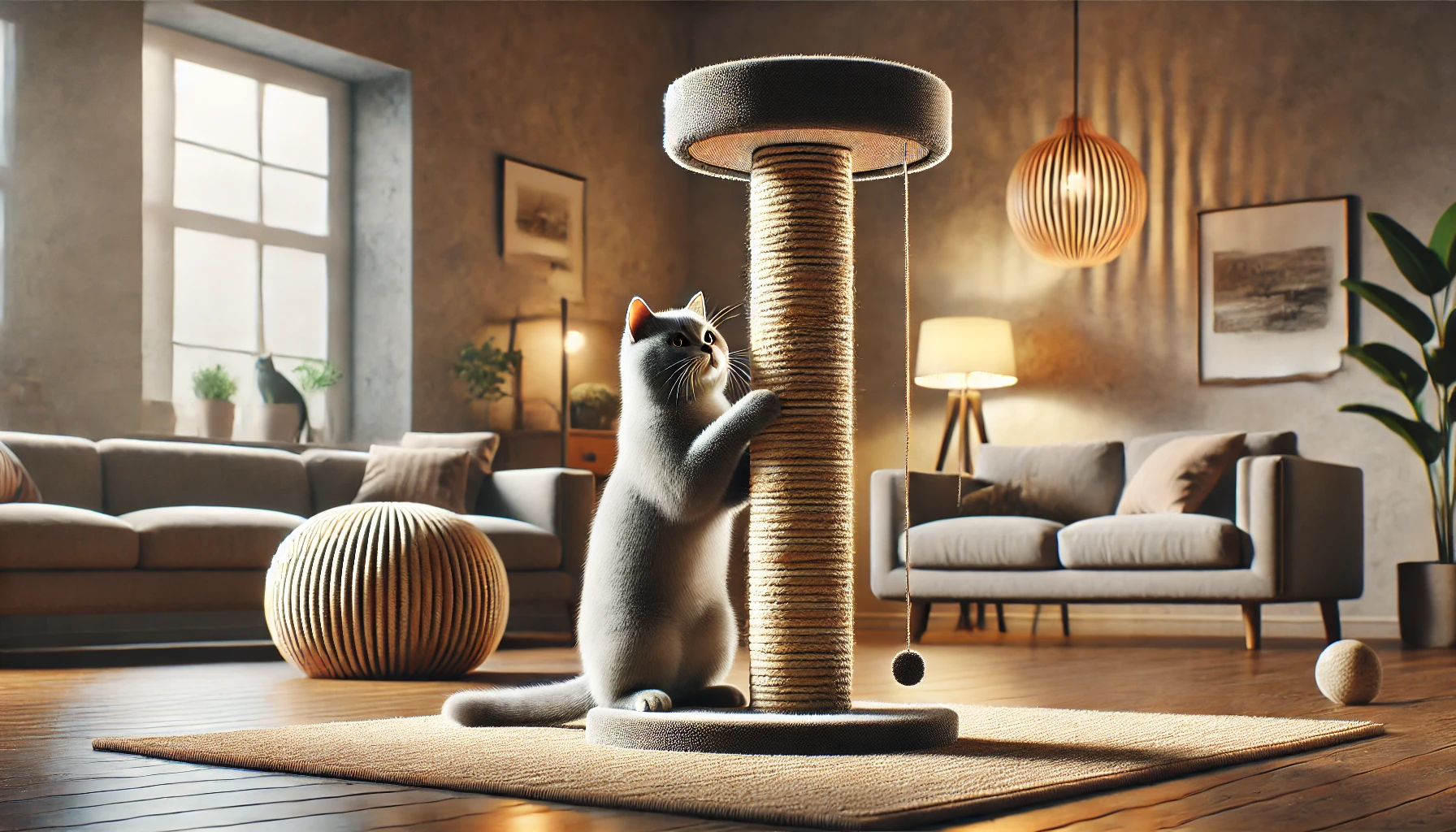
Managing and Reducing Scratching Behavior
Scratching is a natural and essential behavior for cats.
Besides marking their territory, cats scratch to flex muscles and maintain healthy claws.
However, when directed at furniture and household items, it can become problematic.
There are effective ways to minimize and reduce unwanted scratching.
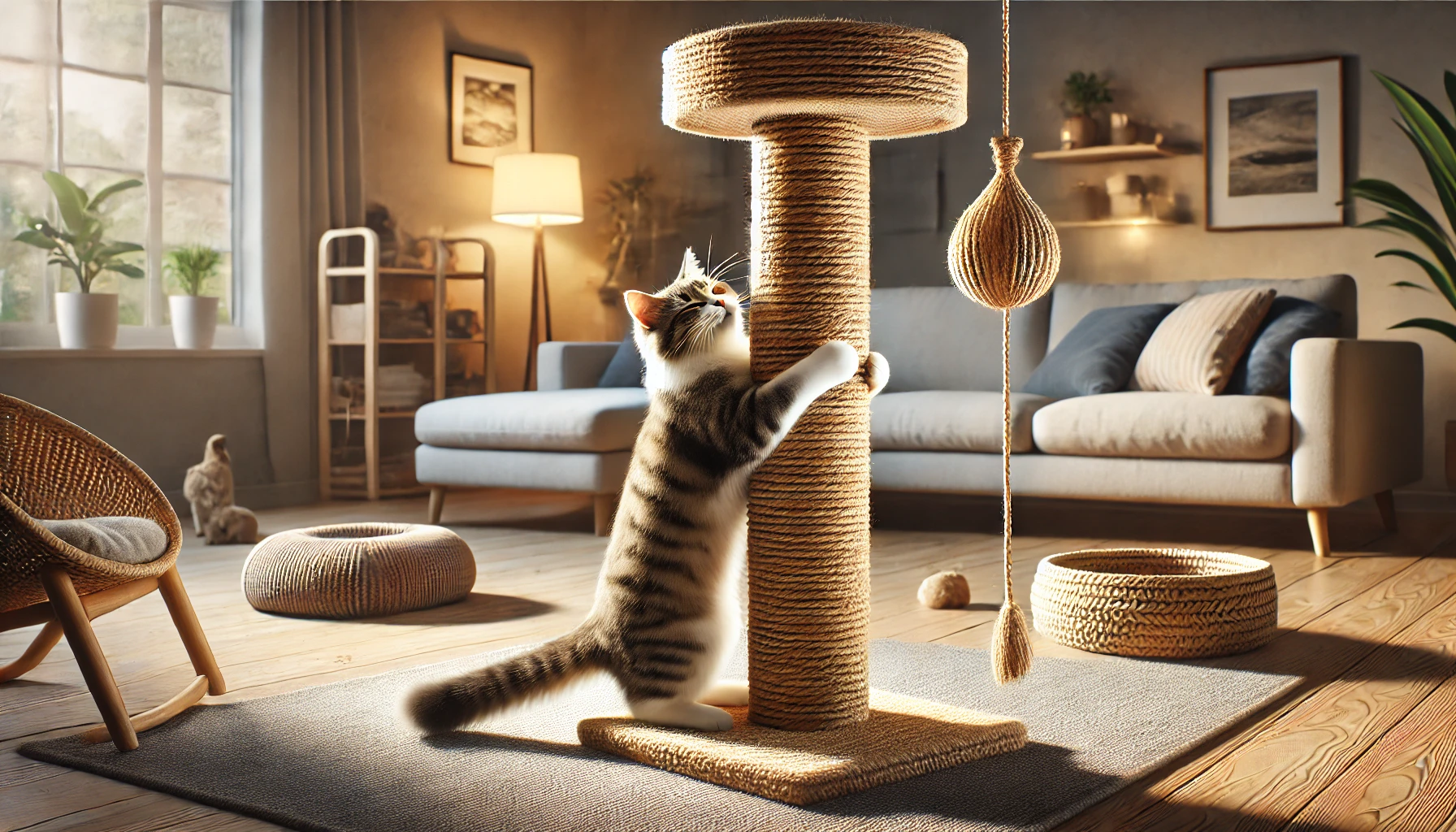
Providing Appropriate Scratching Posts
One of the most important steps in managing undesirable scratching is to provide your cat with appropriate scratching surfaces.
- Variety of Textures: Wrapping posts in materials like sisal, carpet, or cardboard better meets your cat’s preferences.
- Stability and Height: Ensure the scratching post is stable and tall enough to support your cat’s full stretch.
- Strategic Placement: Place posts near areas your cat frequently scratches, near sleeping spots, or close to furniture.
Encourage use by sprinkling catnip on the posts or engaging your cat with toys around the scratching posts.

Deterrents to Safeguard Furniture
To prevent scratching on inappropriate surfaces:
- Protective Covers: Use furniture protectors or double-sided sticky tape on potential scratching areas.
- Odor Deterrents: Apply non-toxic, cat-deterrent sprays in areas where scratching or jumping onto surfaces is not desired.
- Environmental Enrichment: Reduce boredom by providing plenty of toys and engaging in interactive play sessions.
Whenever your cat attempts to scratch furniture, immediately redirect them to an appropriate scratching post.
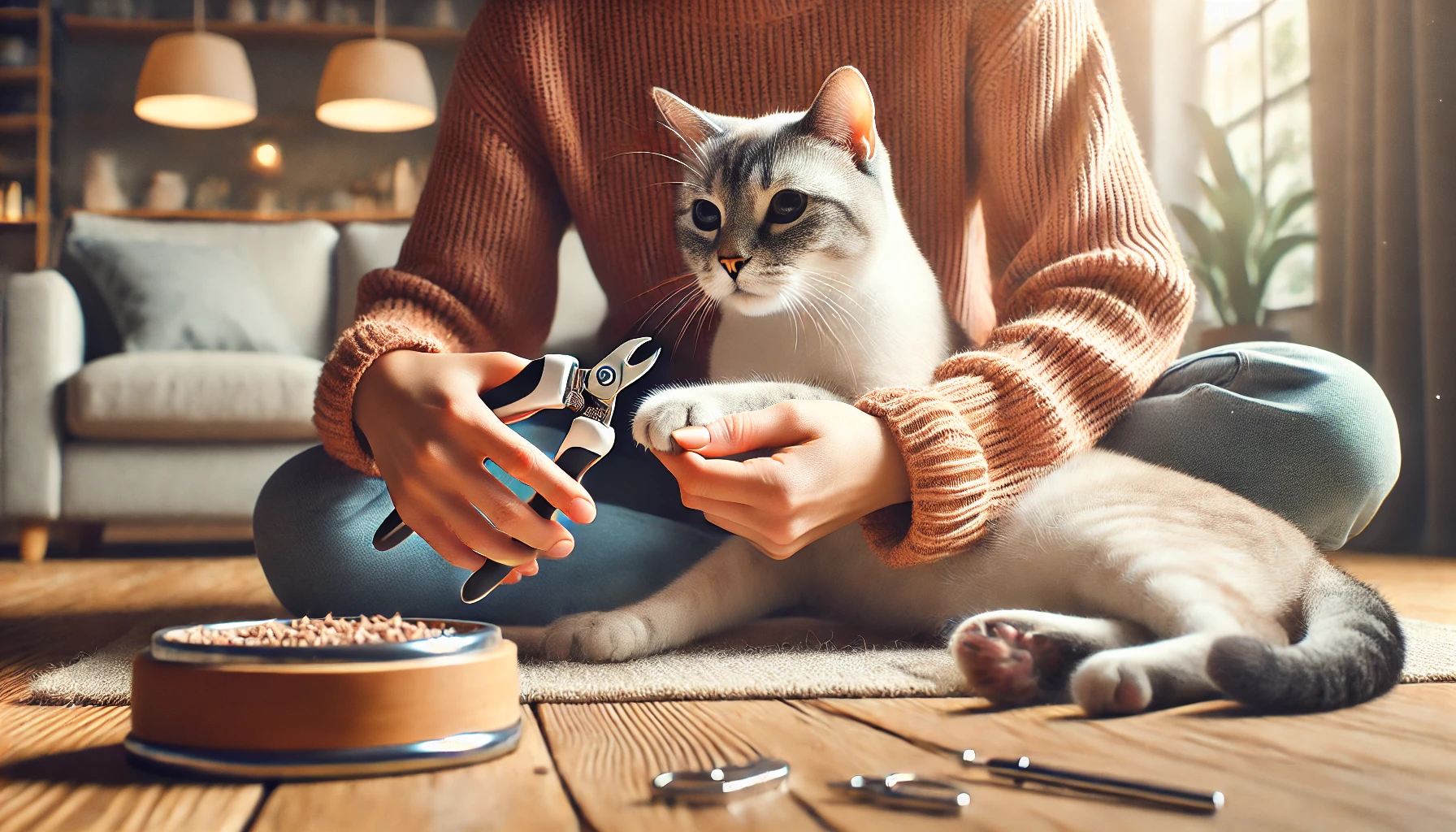
Regular Nail Trimming and Maintenance
Keeping your cat’s claws trimmed can minimize damage from scratching:
- Routine Trimming: Regularly trim your cat’s nails to reduce their sharpness.
- Professional Assistance: Seek help from a veterinarian or professional groomer if you’re uncomfortable trimming nails.
- Nail Caps: Try soft nail caps as temporary protective covers to prevent scratching damage.
Introduce nail trimming gradually, using positive reinforcement to make the experience stress-free for your cat.
By following these strategies, you can successfully manage and reduce unwanted scratching, creating a balanced living environment for you and your cat.
Scratching is natural for cats, but you can minimize damage by offering appropriate outlets.
Provide scratching posts and manage nail care to protect furniture and foster healthy habits.
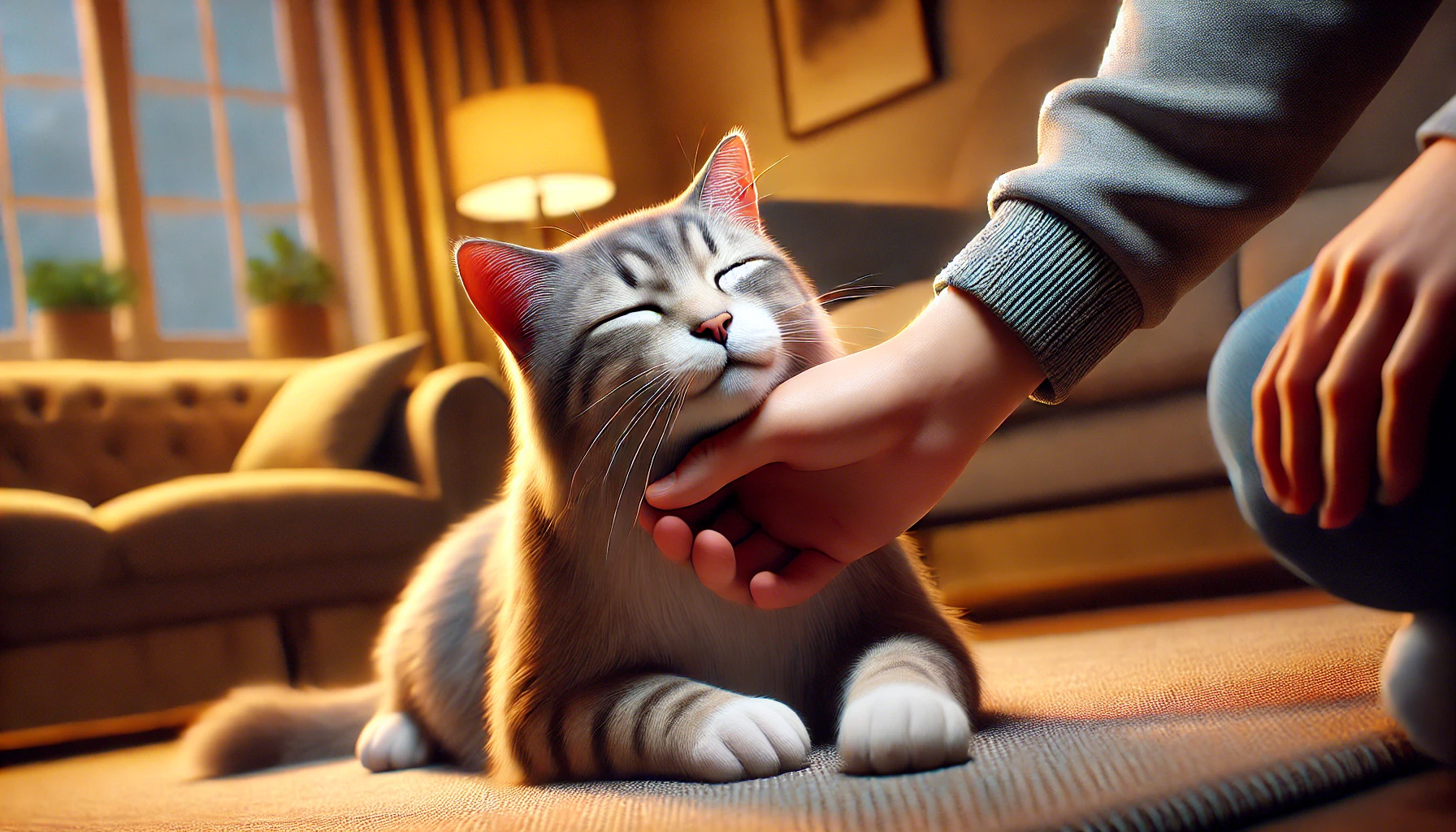
Building a Trusting Relationship with Your Cat
Building a trusting relationship with your cat is essential for smooth coexistence.
A foundation of trust can help reduce unwanted behaviors like biting and scratching, ensuring a better life for your cat.
In the following section, we’ll explore key strategies to develop and reinforce this bond.

Being Aware and Respecting Your Cat’s Boundaries
Understanding your cat’s boundaries is very important.
Cats communicate their comfort levels through body language.
Signs such as flattened ears, twitching tails, and dilated pupils indicate discomfort or overstimulation.
By observing these cues and adjusting your interactions accordingly, you show respect for their personal space, which helps your cat feel more secure around you.
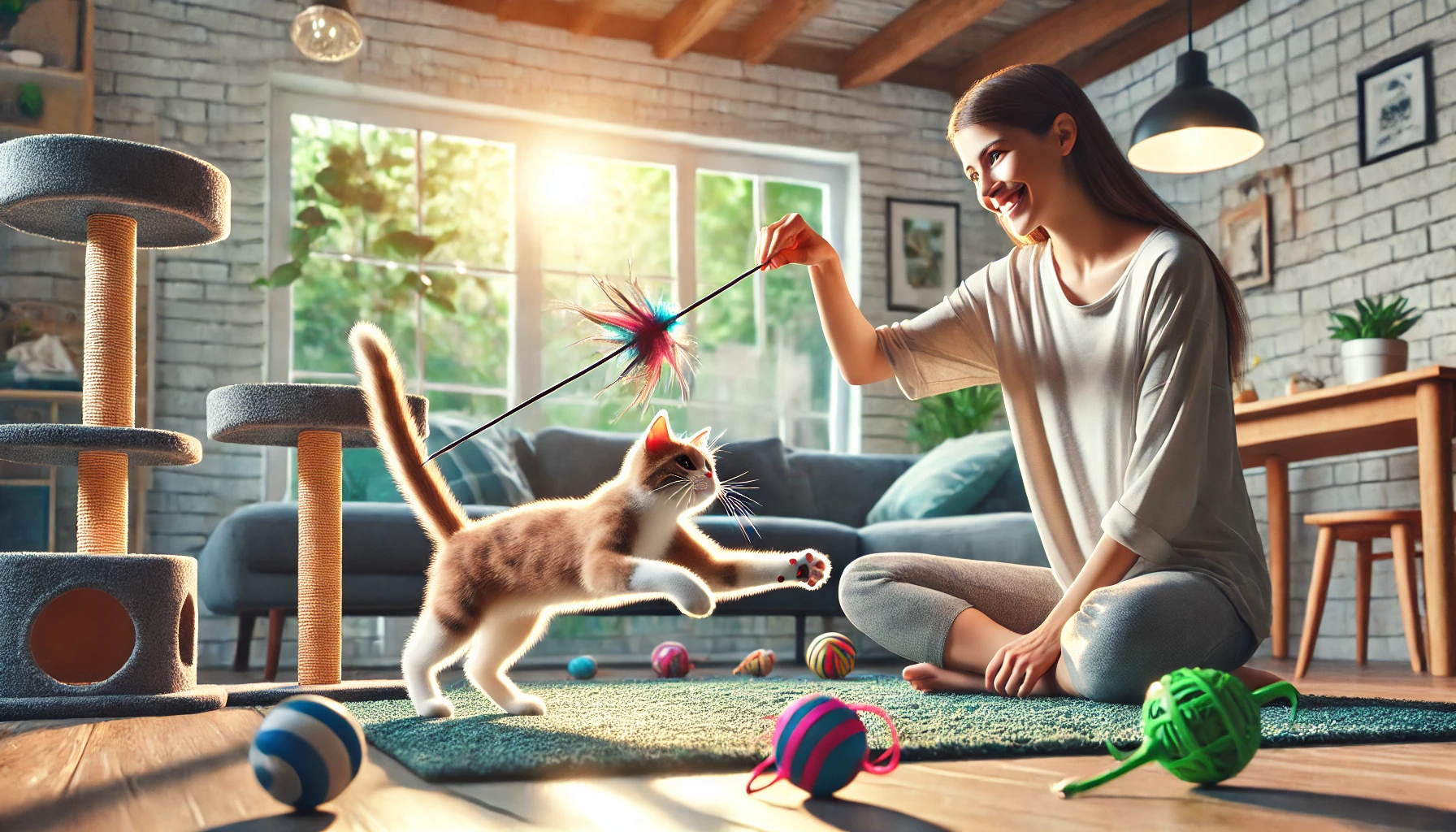
Play and Mental Stimulation on a Regular Basis
Regular playtime is essential for your cat’s physical and mental health.
Interactive sessions using toys like feather wands or laser pointers not only satisfy their natural instincts but also strengthen your bond.
Additionally, offering your cat mentally stimulating activities, such as puzzle feeders and interactive toys, can prevent boredom and encourage positive behaviors.

Creating a Safe and Stress-Free Environment
Building trust requires providing a safe and comfortable environment.
Your home should have designated safe spaces where your cat can retreat and relax.
Consistent routines for feeding, play, and sleep provide your cat with a sense of security.
Reducing loud noises and minimizing sudden changes in the environment also contribute to a stress-free atmosphere, helping to gain your cat’s trust.
By using these strategies, you can instill confidence and trust in your cat, leading to a more rewarding and harmonious companionship.
Building trust through respectful interactions and consistency helps reduce unwanted behaviors like biting and scratching.
Observe your cat’s boundaries and create a safe, comfortable environment for them.

When to Seek Professional Help
While many feline behaviors can be managed at home, certain situations may require professional intervention to ensure the safety and well-being of both you and your cat.
Recognizing when to seek expert help can be crucial for effectively addressing persistent issues.

Spotting Lingering Behavioral Problems
If your cat bites or scratches severely and frequently, without improvement despite consistent training, it may indicate a deeper underlying issue.
Look out for signs such as:
- Unprovoked aggression toward humans or other animals
- Sudden behavioral changes with no apparent cause
- Self-harm behaviors, like excessive grooming or biting
These behaviors are often influenced by stress, anxiety, or past trauma, and may require specialized attention to resolve.

Consulting a Veterinarian Regarding Underlying Health Issues
Medical problems can manifest as behavioral issues.
Conditions like dental pain, arthritis, or neurological disorders can increase aggression or irritability in your cat.
If your cat begins biting and scratching suddenly or acts unusually, it’s essential to consult a veterinarian to rule out any health-related causes.
Early diagnosis and treatment can significantly improve both their behavior and overall well-being.

Working with a Certified Cat Behaviorist
If medical issues are ruled out and training efforts have not resolved the problem, working with a certified cat behaviorist may be beneficial.
These professionals specialize in feline behavior and can create customized behavior modification plans tailored to your cat’s needs.
They typically use techniques such as:
- Behavioral evaluations to identify triggers and patterns
- Desensitization and counter-conditioning methods
- Guidance on environmental enrichment and stress reduction
Collaborating with a behaviorist can provide the insights and tools necessary to address complex behavioral challenges effectively.
While many cat behavioral issues can be managed with patience and proper training, some situations warrant professional help.
Recognizing the signs early allows you to seek the right assistance, ensuring a healthier and happier relationship with your cat.
If your cat’s aggression persists or worsens despite efforts, consider professional guidance.
Behavioral issues can sometimes be due to medical or psychological factors that require specialized assistance.
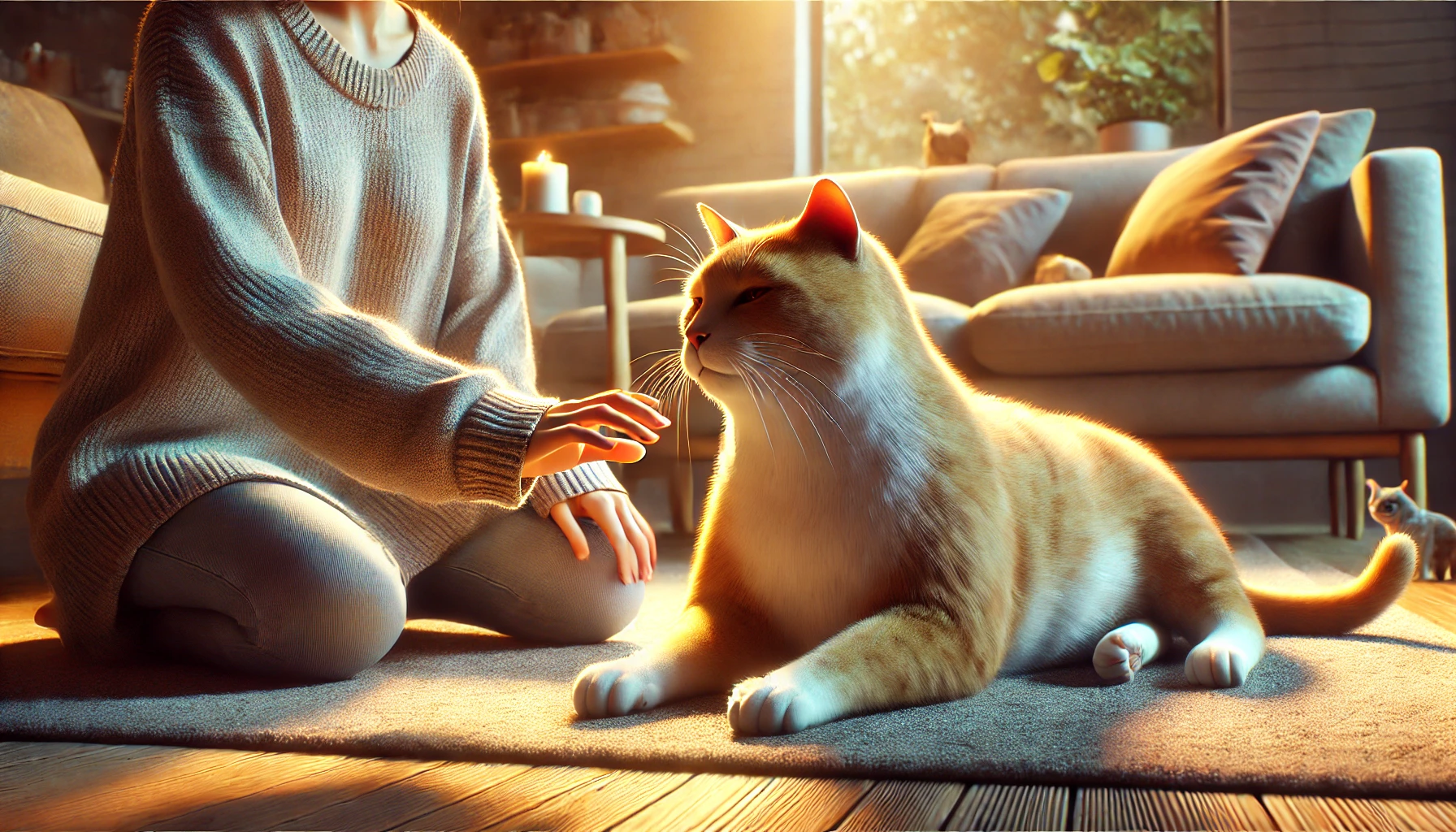
How to Have a Smooth Relationship: Key Points to Avoid Biting and Scratching
Training your cat not to bite and scratch is a process that requires patience, understanding of feline nature, and consistency.
By addressing the reasons for such behavior, you can create an atmosphere of trust and significantly reduce unwanted actions.

Understanding the Root Causes
Each cat is unique, with behaviors shaped by instinct, past experiences, and environmental influences.
Recognizing the probable causes behind your cat’s biting or scratching—such as natural instincts, overstimulation, or health problems—allows you to approach these behaviors with insight and effective practices.

Applying Positive Methods
Controlling biting behavior involves using positive reinforcement, redirecting your cat to toys, and setting clear limits.
Consistency in training, along with family members applying the same methods, promotes greater success.
Ultimately, it’s about creating associations with desired outcomes.

Providing Appropriate Outlets for Scratching
Cats need outlets to satisfy their natural scratching instincts.
Providing suitable scratching posts, protecting furniture from scratching, and maintaining regular nail care are effective ways to manage this behavior.
Encouraging your cat to use these outlets helps meet their needs without causing household damage.

Building Trust and Knowing When to Seek Help
A trusting relationship with your cat is essential.
Respecting their boundaries, engaging them in stimulating play, and maintaining a calm environment all contribute to this trust.
If biting and scratching persist, it’s important to know when to seek professional help—a veterinarian or certified cat behaviorist can make a significant difference in addressing and overcoming complex issues.

Conclusion on Training Cats to Avoid Biting and Scratching
Effective training requires a combination of empathy, consistency, and timely intervention to help cats learn not to bite or scratch.
Understanding the root causes, applying the right techniques, providing suitable outlets, and seeking help when necessary all contribute to a respectful and positive environment.
In doing so, you enhance not only your cat’s quality of life but also strengthen your bond, leading to a more rewarding relationship.
Consistency, understanding, and patience are key to training cats to avoid biting and scratching.
Address root causes, apply positive techniques, and know when to seek expert help.

Frequently Asked Questions on Training Cats to Avoid Biting and Scratching
In this section, we address common concerns about managing feline biting and scratching behaviors.
Why is my cat suddenly attacking me when I am petting it?
Biting during petting often means your cat has reached a threshold of overstimulation.
Cats have limits to how much physical contact they can tolerate.
Watch your cat’s body language to avoid this response.
How do I get my cat to stop scratching furniture?
Provide scratching posts next to furniture, place deterrents like double-sided tape, and encourage use with catnip.
Trim your cat’s nails regularly to reduce potential damage.
Does punishing my cat for biting work?
Punishment may make your cat fearful or aggressive.
Positive reinforcement encourages desired behaviors and redirects biting to acceptable toys.
Are there health issues that could cause increased aggressive behavior?
Yes, medical issues like dental pain or arthritis can lead to irritability.
If your cat shows sudden behavior changes, consult a veterinarian to rule out health-related causes.
How can I teach my kitten not to bite during play?
Discourage playful biting by using toys instead of hands.
Stop interaction if biting occurs and reward gentle play.
Consistency will teach appropriate behavior.
Are some breeds of cats more prone to biting?
While each cat is unique, certain breeds may be more prone to excess energy or overstimulation, leading to biting.
Knowing your cat’s breed traits can aid in behavior management.
My cat bit me and punctured my skin. What should I do?
Immediately wash the wound with soap and water, apply antiseptic, and see a doctor.
Cat bites can introduce bacteria that may cause infection.
How can I tell if my cat is going to bite?
Signs include flattened ears, twitching tail, dilated pupils, and a tense body.
Recognizing these cues can help you redirect interaction before a bite occurs.
Will declawing prevent scratching?
Declawing is controversial and can lead to behavioral and health issues.
Providing appropriate scratching outlets is a more humane and effective alternative.





